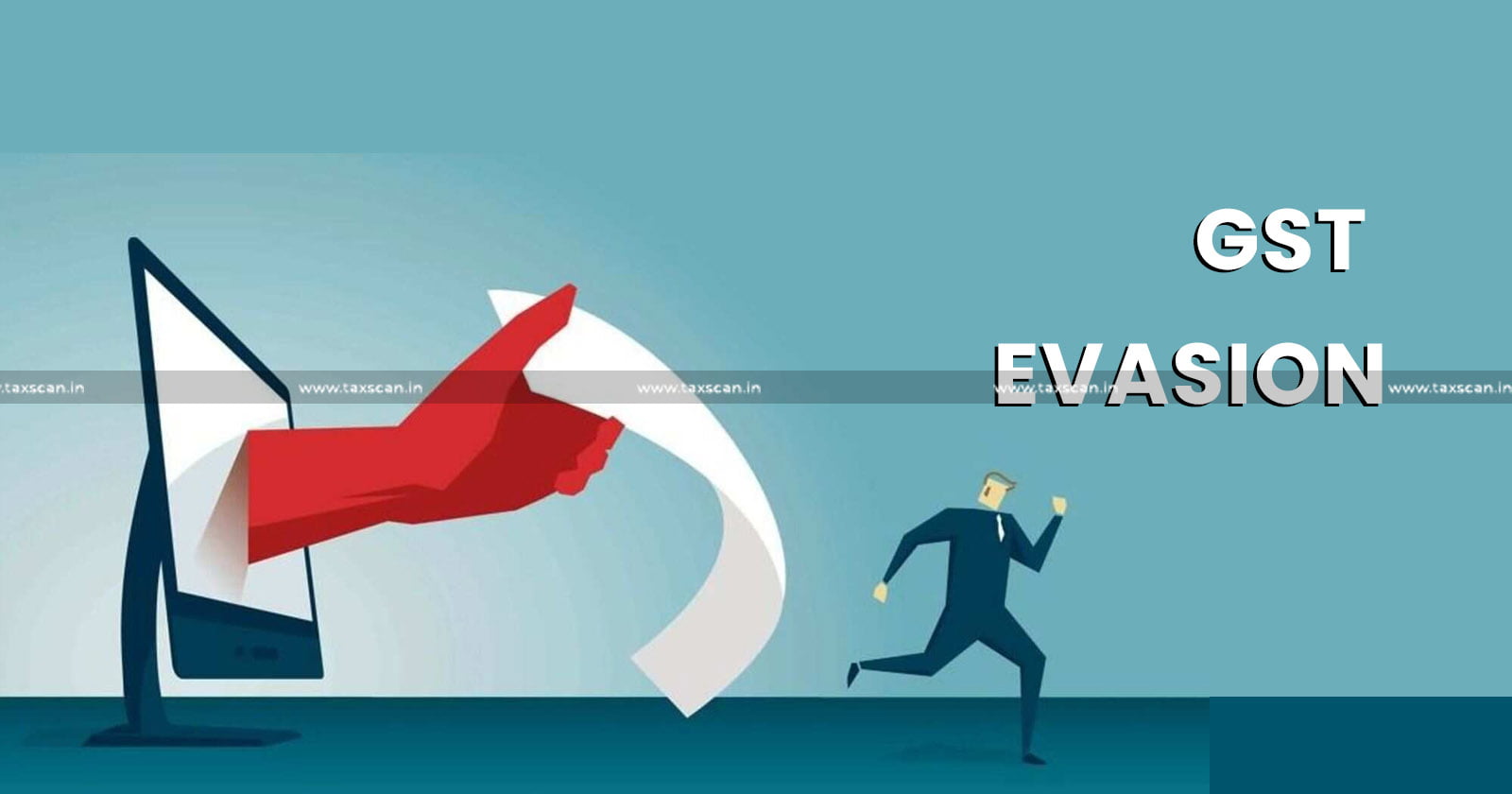Beyond Detection: Why GST Evasion Still Thrives in India Despite E-Invoicing and AI Surveillance
Why is GST evasion in India growing despite high-tech tools like e-invoicing and AI? This article breaks it all down

India’s Goods and Services Tax (GST) system, launched with the promise of streamlining indirect taxation and boosting compliance, has evolved to include advanced tools such as e-invoicing and artificial intelligence (AI)-based surveillance. These innovations have undeniably improved transparency and detection capabilities. Yet, GST evasion remains a significant challenge.
In FY 2023-24, GST evasion detection surged to Rs. 2.01 lakh crore, almost double the Rs. 1.01 lakh crore detected the previous year. This alarming rise calls into question the overall effectiveness of current measures and highlights the need to examine deeper, structural causes of evasion.
Clear all Your Doubts on RCM, TCS, GTA, OIDAR, SEZ, ISD Etc... Click Here
Current Landscape of GST Evasion
The Directorate General of GST Intelligence (DGGI) reported Rs. 2.01 lakh crore in evasion for FY 2023-24, a 100% increase from the Rs. 1.01 lakh crore detected in FY 2022-23. This surge underscores the growing sophistication of tax evasion across industries.
Between April 2020 and September 2023, over 6,000 fraudulent ITC cases were detected, worth Rs. 57,000 crore, with 500 arrests. Yet, enforcement continues to face hurdles only 27.7% of evaded tax recovered, exposing gaps in recovery mechanisms.
Sectoral and Geographic Breakdown:
- Online Gaming: Rs. 81,875 crore across 78 cases.
- BFSI (Banking, Financial Services, Insurance): Rs. 18,961 crore across 171 cases.
- Metals (Iron, Copper, Scrap): Rs. 16,806 crore.
- Geographic Hotspots: Mumbai accounted for Rs. 70,985 crore, followed by Delhi with Rs. 18,313 crore and Pune at Rs. 17,328 crore.
The data reveals that 45% of evasion cases involved non-payment of tax, 20% involved fake ITC, and 19% related to wrongful ITC claims. These figures point to serious enforcement gaps, especially in sectors and cities known for high transaction volumes and complex supply chains.
Technology Deployment
E-Invoicing: A Step Forward, But Not a Cure-All
Since its phased rollout from October 2020, e-invoicing has been expanded to all businesses with an annual turnover exceeding Rs. 5 crore. It has created a digital trail, helping curb fake invoices in B2B transactions.
Benefits include:
- Real-time invoice reporting
- Automated ITC matching
- Reduced scope for duplicate or backdated invoicing
But it largely excludes B2C transactions and much of the informal sector, where evasion is more rampant. SMEs also struggle with implementation, facing costs and technical issues with system integration, especially in regions with poor digital infrastructure.
GST READY RECKONER: Complete Topic wise Circulars, Instructions & Guidelines Click here
AI and Analytics: Powerful, but Imperfect
AI and data analytics have helped detect over 6,000 fake ITC cases worth Rs. 57,000 crore between April 2020 and September 2023. Tools like the Automated Return Scrutiny Module flag mismatches in returns, improving detection rates.
Yet, fraudsters constantly adapt:
- Fake firms are set up with forged KYC documents
- Complex transaction layering is used to obscure the audit trail
- Low-value frauds often slip through due to threshold-based detection models
The AI systems are only as good as the data they analyze, and given lagging updates or patchy data, they can fall behind new fraud strategies.
Key Reasons GST Evasion Persists
1. Sophistication of Evasion Networks
Fake firms and invoices have become part of an underground economy. During a 2023-24 crackdown, 29,000 bogus firms were uncovered with Rs. 44,015 crore in ITC evasion. Sectors like bicycles and gaming have seen under-invoicing and undervaluation tactics flourish.
Despite identifying large scams, actual recovery remains limited only Rs. 53 crore recovered from Rs. 82,000 crore evasion in online gaming, exposing critical enforcement weaknesses.
2. Structural and Systemic Limitations
Filing 24 returns per year per state creates operational complexity, particularly for small businesses. Disparities in enforcement across states also lead to inconsistent application of rules. Many fraudsters shut down their businesses or disappear before investigations begin, rendering penalties ineffective.
3. Economic Incentives to Evade
With GST rates reaching up to 28%, especially in goods consumed by price-sensitive groups, there is a natural incentive to under-report. Small businesses often see taxes as burdensome, particularly when weighed against perceived returns in public services. This fuels non-compliance, sometimes intentional, sometimes due to ignorance.
4. Policy and Enforcement Delays
Annual return scrutiny often lags by multiple years. For example, returns due by June 2019 were reportedly taken up only in 2020, allowing evaders to operate for extended periods. Low deterrence is evident in the recovery data just Rs. 20,128 crore of Rs. 1.88 lakh crore detected between April and December 2024 recovered.
Know the complete aspects of tax implications of succession, Click here
Expert Recommendations to Control GST Evasion
Experts have put forth several recommendations focused on expanding technology, strengthening enforcement, and increasing taxpayer awareness to address the continued rise in evasion
- Enhance E-Invoicing and Technology: Expand e-invoicing to B2C transactions within two years and integrate AI for early detection. Establish predictive early-warning systems using analytics to flag suspicious activity.
- Sector-Specific Enforcement: Prioritize audits in high-risk sectors like online gaming, BFSI, and metals. Online gaming alone accounted for over Rs. 81,000 crore in evasion, demanding robust enforcement.
- Address ITC Frauds: Automate scrutiny of ITC claims and improve e-invoice cross-verification to catch fraudulent claims early. The goal is to streamline ineligible credit detection in the new return filing system.
- Geographic Focus: Deploy targeted audits and compliance drives in high-evasion cities like Mumbai, Delhi, and Pune, which together account for a large share of GST fraud.
- Enforce Penalties and Deterrence: Use the full force of existing GST penal provisions. From April to December 2024, 132 arrests were made and Rs. 20,128 crore recovered, indicating that strict action can yield results.
- Simplify Tax Structure: Experts recommend rationalizing tax rates and simplifying HSN code classifications to reduce confusion and eliminate loopholes that evaders exploit.
- Public Awareness and Education: Conduct outreach programs to educate taxpayers about compliance requirements, penalties for evasion, and the benefits of transparency.
- Whistleblower Mechanisms: Encourage tip-offs by offering protections and rewards. Platforms like the CBIC’s tax fraud portal are instrumental in empowering informants.
- Update Laws Regularly: Periodic reviews and updates to GST laws are essential to close emerging loopholes, such as those involving multiple PANs or cross-entity invoicing.
Complete Blueprint for Preparing Project Reports, click here
Challenges
Despite progress, compliance remains a challenge, particularly for SMEs that face technical barriers and rising compliance costs. While e-invoicing and analytics improve transparency, enforcement lags in terms of recovery. Between April and December 2024, only Rs. 20,128 crore was recovered from Rs. 1.88 lakh crore in detected evasion. Public continues to reflect these concerns, with calls for simplification, better legal mechanisms for recovery, and broader support for small businesses adapting to digital systems.
Support our journalism by subscribing to Taxscan premium. Follow us on Telegram for quick updates


